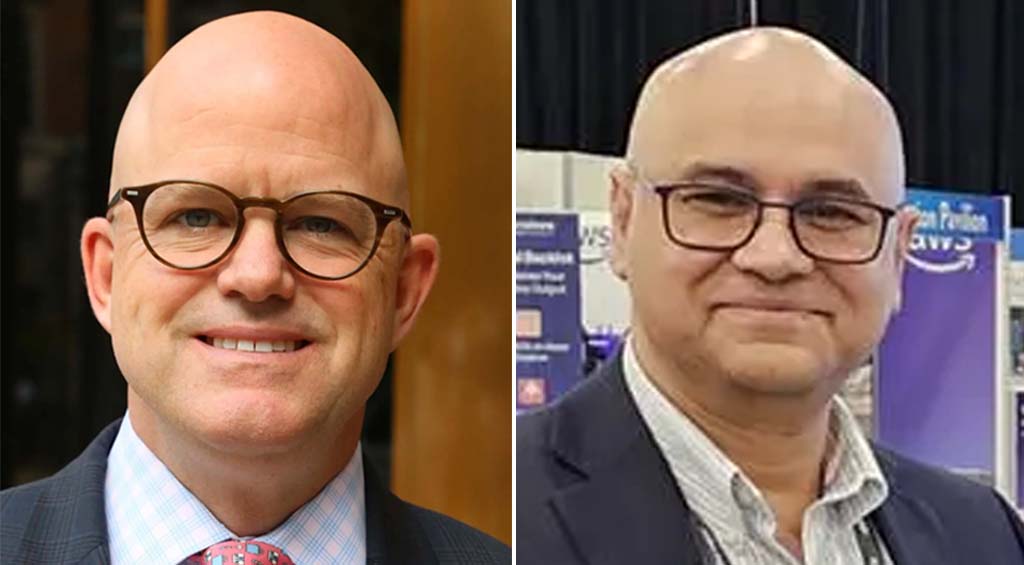Much left to be done for DTV transition to be successful, Donovan says
A significant amount of work must be done between now and Feb. 17, 2009, to make the DTV transition a success, according to Association for Maximum Service TV (MSTV) president David Donovan.
Speaking during a March 12 webcast, Donovan outlined the magnitude of the remaining work and the potential complications of preventing stations from interfering with one another as the transition unfolds.
The size of the transition is making effective coordination difficult among stations in the same and adjacent markets as well as with cable, satellite, telephone and SMATV operators and international broadcasters for stations along the Mexican and Canadian borders.
To illustrate the extent of interference that will be caused without effective planning and coordination, Donovan laid out the numbers. According to the MSTV chief, of the stations that will relocate from their temporary DTV channel assignment:
- 35 percent (about 600 stations) will be changing channels on Feb. 17, 2009;
- 28 percent will be going from their temporary DTV channel back to their old analog channel assignment;
- 6 percent will move to a new DTV channel.
If the 600 move to their final channel assignment early — in other words, if all stations that are moving don't do so at once — 181 of the 600 stations would cause interference to roughly 300 stations, he said.
For the estimated 500 stations moving back to their analog channels, 72 will cause interference to existing neighboring analog and digital stations if the neighboring stations do not move on time. Those 72 stations will cause interference to 95 surrounding stations.
The 109 stations getting new channels will cause interference to 205 existing neighboring analog and digital stations if the neighboring stations do not move on time.
The professional video industry's #1 source for news, trends and product and tech information. Sign up below.
A well-coordinated transition will require the sufficient availability of transmitters, antennas, transmission line and tower rigging service, Donovan said. Unfortunately, there appears to be "some basic supply side issues."
Based on an informal survey of 165 MSTV members and engineers, Donovan presented an estimated table of the equipment and services needed to make the DTV transition.
The estimate showed:
EquipmentEstimated Demand (units) Transmitter 550-600 Mask/filter 600-650 Exciter 700-750 ATSC encoder 450-500 Generator 250-300 TX line 400-450 Antenna 350-400 STL 150-200
According to Donovan, on the supply side, there are three to four major transmitter manufacturers, three major sources of RF systems, antennas and transmission line, and seven major installer/riggers that do the high-tower work necessary for broadcast.
Matching up the estimated demand with the supply, Donovan underscored the urgency with which broadcasters must begin to acquire DTV transmission equipment. His supply and demand chart showed:
Build and/or installEst. No. of UnitsNo. of ManufacturersTotal No. of1 wk sched.2 wk sched. Transmitter 575 3 192 383 Mask/filter 625 3 208 416 Antenna
(build only) 375 3 125 250 TX line/Ant. (install) 425 7 61 122
To advance the transition and assist with channel coordination and timing, the MSTV will begin a "Rubber Meets the Road" tour, Donovan said. The tour will put MSTV in close contact with state associations to assist with the transition.
Donovan hosted and was one for four presenters of "The Digital Transition: The Rubber Meets the Road Webcast." The others included Andrew Long, associate chief, Media Bureau, FCC; John Lawson, president and CEO of the Association of Public Television Stations; and Marcellus Alexander, executive VP, National Association of Broadcasters.
The webcast can be viewed in its entirety at the MSTV Web site.
For more information, visit www.mstv.org.
